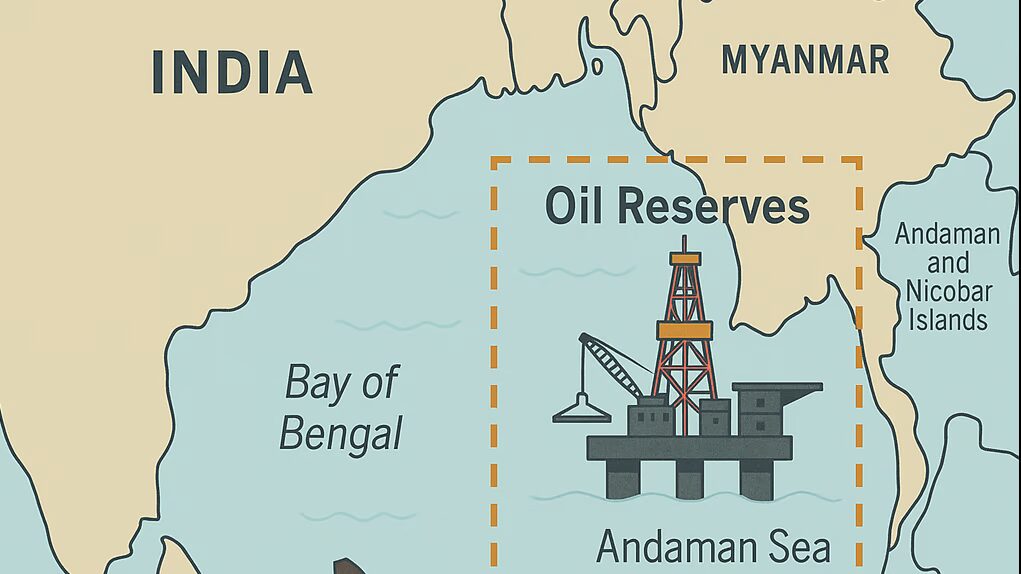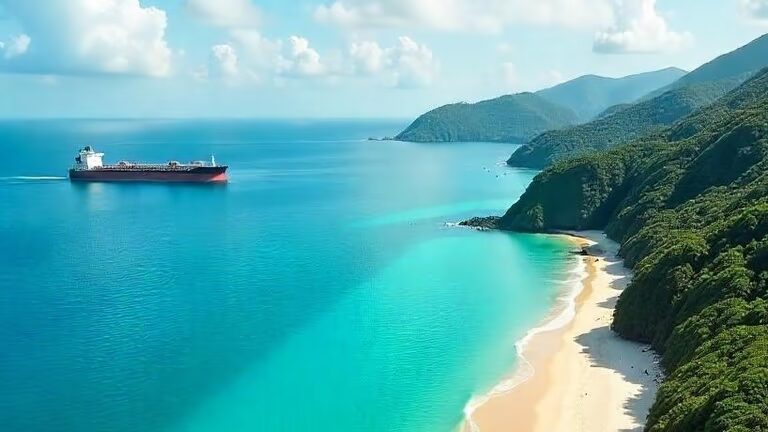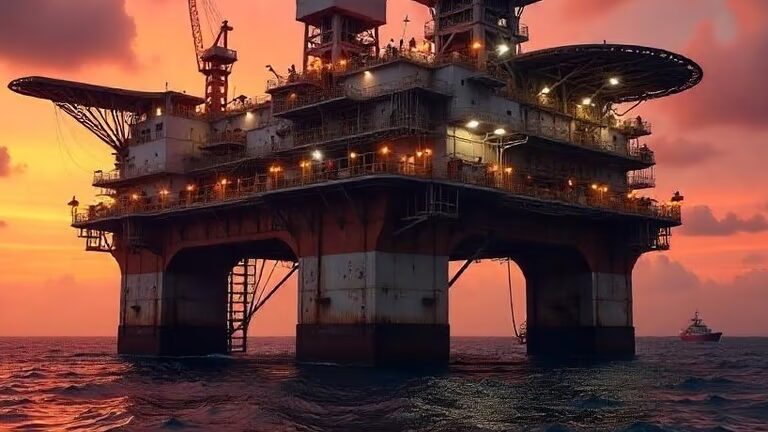
India might be on the verge of an energy revolution, and this spark could come from the waters of the Andaman Sea. After years of relying heavily on crude oil imports to fuel its growing economy, India is now tapping into a massive, largely unexplored reserve that could significantly reduce its dependency on foreign oil.
ALSO READ- PM Modi’s Visit to Cyprus: Strategic Partnerships and the Grand Cross Honour Explained
The Unseen Promise Beneath the Waves-
The Andaman Sea, tucked between the Indian subcontinent and Southeast Asia, has long remained untouched when it comes to energy exploration. Known more for its scenic beauty and biodiversity than industrial activity, this region was previously avoided due to its remote location, strategic importance, and environmental sensitivities.
But with rising energy demands and geopolitical shifts, India has now turned its eyes toward these waters. Fresh exploration activities have revealed something truly remarkable—large deposits of crude oil and natural gas that could dramatically change the country’s energy outlook.
How It All Began: Seismic Shifts in Policy and Focus-
For decades, oil companies had limited access to the Andaman Sea. But recent policy reforms have opened up new exploration blocks in this region. Backed by new licensing rounds and a push from the central government to reduce crude imports, companies have started surveying and drilling with renewed energy.
Thanks to cutting-edge seismic mapping and advanced geophysical studies, large parts of the seabed have now been scanned, revealing structures rich in hydrocarbons.
Who’s Leading the Drilling Efforts?
Two major public sector players—Oil India Limited (OIL) and Oil and Natural Gas Corporation (ONGC)—are at the forefront of this exploration effort.
OIL has already started drilling its first exploratory well, which is in the Andaman Sea. This project marks the company’s move into offshore deep-water drilling in the eastern offshore basin. ONGC, not far behind, has also identified multiple promising drilling spots and is preparing for a series of deep-water test wells.
Each well requires complex logistics, highly specialised rigs, and significant financial investment. Yet, both companies seem optimistic about the long-term rewards.
How Big is the Oil Find?

While the full extent of the reserves is still being evaluated, early estimates suggest a game-changing discovery. Experts believe the Andaman Sea may hold billions of barrels worth of oil equivalent—enough to supply the nation with significant amounts of energy for years to come.
Only a small fraction of the potential reserves have been tapped so far, meaning India is just scratching the surface of what could be one of its biggest natural resource finds in decades.
Why This Matters: Economic and Strategic Implications-
Since India is currently one of the biggest and largest importers of crude oil in the world, over 85% of the country’s oil needs are met by foreign sources, making the economy highly sensitive to global oil price fluctuations and geopolitical tensions.
This new discovery is not just about oil—it’s about:
- Energy Security: Reducing dependence on volatile foreign oil markets.
- Economic Relief: Saving billions in import bills and strengthening the rupee.
- Job Creation: Generating employment in engineering, shipping, and logistics.
- Regional Development: Boosting the economy of the Andaman and Nicobar Islands.
Technology at the Core-
Exploring oil under the ocean is not a small task. It requires state-of-the-art drilling rigs, AI-driven seismic analysis, and precision navigation. Deepwater exploration involves extreme pressure, complex geology, and expensive equipment.
To meet these challenges, India is collaborating with global partners for expertise and technological support. These partnerships ensure the exploration is efficient, safe, and environmentally compliant.
Walking the Tightrope: Development vs. Ecology-

One of the biggest concerns around drilling in the Andaman Sea is its environmental sensitivity. These waters are home to vibrant coral reefs, endangered marine life, and fragile ecosystems. As such, every move in the region must be closely monitored to prevent irreversible damage.
Environmental regulations are being enforced stringently. Every project must go through detailed assessments and get clearances from multiple authorities before a single drill touches the seabed.
Strategic Location Adds Another Layer of Value-
Beyond just oil, the Andaman Sea has massive strategic importance. The islands are close to key international shipping lanes that connect Asia with Europe and the Middle East. By building oil infrastructure here, India also gains a foothold in one of the world’s most critical maritime zones.
This aligns well with India’s broader geopolitical strategies, especially in the context of the Indo-Pacific region and growing competition with other regional powers.
The Road Ahead-
While the potential is enormous, it’s important to understand that this is a long-term play. Discovering oil is just the beginning. It takes years to build the infrastructure needed to extract, transport, refine, and distribute oil at scale.
Here’s what the journey ahead might look like:
- 2024–2025: Completion of test drilling and data analysis.
- 2026–2027: Setting up of processing and transportation systems.
- 2028–2030: Full-scale commercial production, if results are positive.
A Story Beyond Statistics-
Behind every rig, every drill, and every data set, there are real people. Scientists, engineers, local workers, and government officials are all part of this monumental effort.
For many residents of the Andaman Islands, this oil discovery could mean better infrastructure, employment, and access to services. For young engineers, it represents the future of Indian energy innovation. And for the average citizen, it offers the hope of more stable fuel prices and stronger national growth.
A Leap Toward a Self-Reliant Future-
The discovery of oil reserves, which has been made in the Andaman Sea, could mark a turning point for India. It’s more than just a find—it’s a symbol of possibility. With the right mix of innovation, regulation, and investment, India has a chance to become more self-reliant, environmentally conscious, and economically strong.
The ocean may be vast and mysterious, but under its waves lies an opportunity India can no longer ignore.
